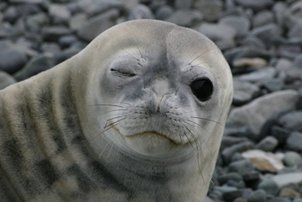This post is about my latest research published in the Journal of Geophysical Research about the GIA response over Antarctica. But let’s start from the beginning…
What is GIA?
For those who may not be familiar with the term (I wont blame you!), GIA stands for Glacial-Isostatic Adjustment. This is a response of the Earth’s mantle to changes in the surface.
The Earth’s mantle is a viscoelastic material which responds very slowly to changes in the surface. For instance, after the last glaciation (~20.000 years ago), the large ice-sheets lying over northern Europe and north America melted away, causing a “rebound” (or an uplift trend) of the solid Earth, which, in fact, is still going on!.
We can still feel these changes nowadays, but GIA is a really difficult process to be measured, specially in Antarctica!
